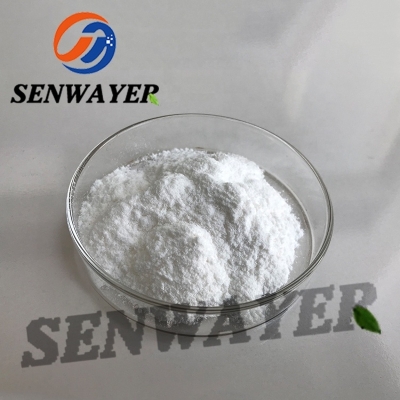Simulation analysis of cooling process of hollow products
-
Last Update: 2007-02-02
-
Source: Internet
-
Author: User
Search more information of high quality chemicals, good prices and reliable suppliers, visit
www.echemi.com
Abstract: through the analysis of the cooling process of hollow products, the physical model and heat transfer equation in the cooling process are established Taking HDPE as an example, the finite element analysis software ANSYS is used to simulate and analyze, and the cooling curve is obtained The corresponding point of view on the cooling process of hollow products is put forward Hollow blow molding is an important processing method of plastics The molding process can be divided into three stages: extrusion, mold locking, blow molding, cooling and curing The cooling and curing stage is the key part of the whole process The cooling time of extrusion blow molding products accounts for more than 60% of the whole molding cycle, and that of thick wall products accounts for 90% Therefore, improving the cooling efficiency of blow molded products can shorten the molding cycle, reduce energy consumption and improve productivity Cooling is the main factor affecting the properties of blow molded products Uneven cooling will make the shrinkage of different parts of the products different It may cause warpage of products and skew of bottleneck, and may also cause premature mechanical damage of blow molded products In addition, cooling and shrinkage also affect the residual thermal stress in the products The cooling of extrusion blow molded products generally includes external cooling (heat conduction between the external surface of the products and the mold cavity), internal cooling (convective heat transfer between the internal surface of the products and cooling air or other media), and post mold cooling (natural convective heat transfer between the internal and external surface of the products and workshop air or other media) Edwards et al Studied the cutting of extrusion blow molded products with one-dimensional unsteady heat transfer model The cooling process of sheet, and through the "half bottle" experiment to prove its theoretical prediction after L31, for the cooling stage of extrusion blow molding products, scholars at home and abroad have been trying to use different methods to study this complex process since the late 1970s As we all know, the cooling of hollow blow molding mainly depends on the cooling of mold, and the inside is usually only air cooling, so the temperature difference between the inside and outside is very large after demoulding, which inevitably results in the anisotropy of product performance For crystalline plastics, the internal and external crystallinity are very different, and the heat redistribution of the part itself after demoulding may cause warping deformation In order to solve this problem, most people focus on reducing the temperature of the inner surface of the products The main methods are: (I) setting the circulating cooling air; (2) injecting liquid CO after blowing; (3) injecting high-pressure humid air; (4) using low-temperature air, etc But these methods are not ideal in practical application Some people start to reduce the temperature of the mould as much as possible, but considering the "sweating" phenomenon of the mould, the temperature drop is limited In this paper, a mathematical model of unsteady heat transfer is established, and ANSYS is used to analyze the cooling process of hollow blow molding ANSYS is a large-scale finite element analysis program developed by American ANSYS company in 1970s It integrates structure, heat, fluid, electromagnetic and acoustic analysis Every kind of the first mock exam is based on the principle of conservation of energy The temperature of each node is calculated by the finite element method Other thermophysical parameters are derived from ANSYS ANSYS thermal analysis is divided into two categories: steady-state heat transfer analysis and transient thermal analysis The establishment of the model is as mentioned before: the cooling of the blowing mould is the inner layer cooling and the outer layer cooling For the inner layer, it mainly depends on the air convection staying in the inner layer, while for the outer layer, there are various forms of mold cooling, including: circulating water pipe, casting water way, spray cooling, etc In any case, it is important for Zui to ensure the uniformity and consistency of cooling According to the simulation calculation, the geometrical dimensions of our products are as follows: the bottle height is 135mm, the outer diameter is 40mm, and the wall thickness is 3mm ANSYS 7 is used for modeling Because of the symmetry, we only analyze half of them High density polyethylene (HDPE) is used as the resin to be analyzed The initial temperature of cooling is 180 degrees The density, enthalpy, thermal conductivity, specific heat and other thermal physical properties change with the temperature See the reference for the physical property data The starting temperature of cooling water and cooling air is 20 ℃ In the process of using ANSYS for analysis, we choose 8 nodes, one degree of freedom solid 70 thermal element for transient thermal analysis After setting material physical parameters, boundary conditions and initial conditions, the geometric model is meshed We use the combination of intelligent cell size and default cell size to divide the geometric model into free meshes, and confirm that there is no wrong or bad mesh After grid partition, the number of nodes and units of products is 1834 and 5211 respectively Then apply the load to solve, and carry on the post-processing The results of calculation and discussion we deal with the settlement results, and obtain the transient temperature distribution in different positions of the product wall thickness direction and the temperature distribution along the product wall thickness direction at different times In the first six seconds of the cooling process, the temperature of the outer wall of the product drops rapidly, which is close to the temperature of the cooling water In the later cooling process, the temperature change is small It can also be seen from Figure 4 that as the cooling process goes on, the temperature of the inner wall of the product drops slowly, but because we assume that the cooling air stays in the bottle during the cooling process, its transient temperature distribution curve is not smooth If we assume that the cooling air is in the flowing state, then the temperature distribution curve of the inner wall of the product will be relatively smooth, but this will increase the difficulty of analysis For the small products analyzed in this paper, there is no need It can also be seen from the figure that the closer to the outer wall of the product, the faster the temperature drops, and in the first 20 seconds of the cooling process, the faster the temperature drops conclusion (1) In this paper, the cooling process of hollow products is analyzed, and the physical model of cooling process is established According to the assumptions in this paper, the transient heat transfer equation of cooling process is given Combined with the boundary conditions and initial conditions, the transient temperature distribution and different cutting edge in different positions of the product wall thickness direction are obtained respectively by using ANSYS finite element analysis software Temperature distribution in the direction of product wall thickness According to the analysis process and the analysis of Fig 4 and Fig 5, the cooling time can be controlled within 20-30 seconds After 30 seconds, the cooling is limited, so it can not be further reduced by extending the time (2) Because of the lack of experience, there are some defects in the process analysis, hypothesis, model building, thermal analysis unit selection and analysis solution Our next work is to improve our analysis model, and strive to make our simulation analysis better reflect the actual production process (3) Due to the uneven cooling in the cooling process, which results in the concentration of thermal stress, we will carry out the thermal force coupling analysis on the basis of improving the analysis model, in order to help optimize the die structure design and improve the cooling process operation, so that the cooling can be carried out evenly References: [1] Huang Hanxiong Plastic blow molding technology [M] Beijing: Chemical Industry Press, 1996182 [2] Edwards M F, suvanaphen P K, and Wilkinson Polymer Eng SCI., 1979,19:910 [3] Edwards M F, Georgiades s, and suvanaphen P K cast and rubproc and appl, 1981, (1): 161 [4] gargl SK, Birley a W play and rubproc and appl, 1982, (2):105 [5]Kamal M R, and Kalyon Polym Eng Sci., 1983, (23):503 [6]Edwards M F, Ellis D I, and Georghiades S Plast and Rub Proc and Appl, 1985, (5): 143 [7]Mengwes G W, Kalwa M and Schmidt J Kunststoffe German Plastics, 1989,79: 36 [8]Birley A W, Barnes Yeh P C, Edwards M F, and Smith A Plast and Bub Proc and Appl, 1986,13: 337 [9]Eccles C R H, Ellis D I, and Heggs P J Plast and Rub Proc and Appl, 1990,14:219 [10]Heggs P J, Houghton J M, and Ingham D B Plast and Rub Proc and Appl, 1995,23: 203 [11]Bradean R, Ingham D B, and Heggs J Plast and Rub Proc and Appl, 1998,27: 65 [12]Laroche D, Kabanemi K K, Pecora L, Diraddo r W polymer Eng SCI., 1999,39:1223 [13] Hu Guanghong Analysis of cooling process of hollow blow molding, plastic technology, 1998,4:12 [14] Huang Hanxiong Mechanism of plastic extrusion blow molding [J] Polymer bulletin, 2002, (4:12 [15] Jiamu studio Ansys5.7 limited element case analysis course [M] Beijing: Mechanical Industry Press, 2002:2 [16] Dai gance Transfer phenomenon in polymer processing [M] Beijing: China Petrochemical Press, 1999,39 [17] Ю C lipatov Polymer Physical Chemistry Manual [M], Volume II Beijing: China Petrochemical Press, 1995269 [18] Liu Peiru Chemical process and equipment [M] Beijing: China Light Industry Press, 1994124, 371 [19] lawendale C plastics extrusion [M] Beijing: China Light Industry Press, 1996
This article is an English version of an article which is originally in the Chinese language on echemi.com and is provided for information purposes only.
This website makes no representation or warranty of any kind, either expressed or implied, as to the accuracy, completeness ownership or reliability of
the article or any translations thereof. If you have any concerns or complaints relating to the article, please send an email, providing a detailed
description of the concern or complaint, to
service@echemi.com. A staff member will contact you within 5 working days. Once verified, infringing content
will be removed immediately.







